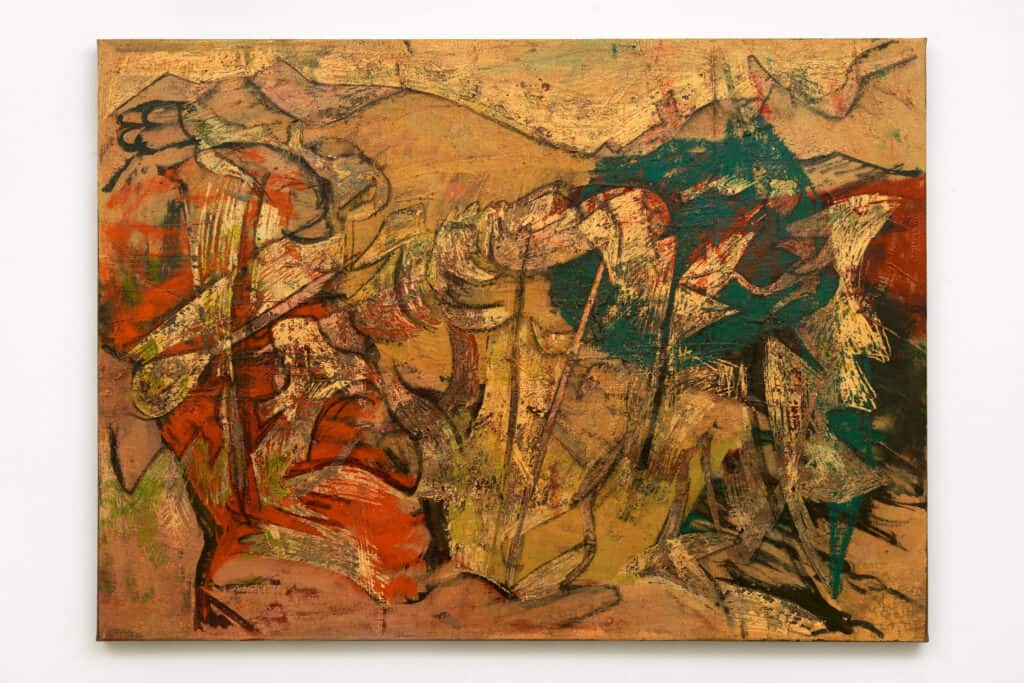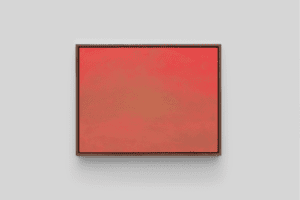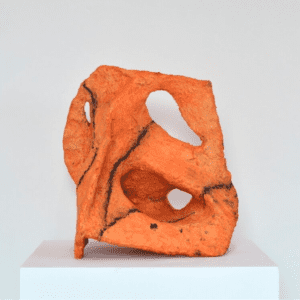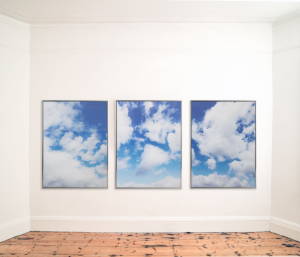
‘The Woven Field’, a solo exhibition of new paintings by British artist Tim Stoner is opening at Vardaxoglou inaugurating their new gallery space at 7 Royalty Mews, London, presenting Stoner’s large-scale canvases, the first exhibition of these works in over two years.
Tim Stoner has recently returned to the United Kingdom after a period of 20 years in Ronda, Spain. Eventually forced out of Spain by Brexit, his time there was the real propellor to his practice in painting, rousing the heat-drenched images which are singed into the canvas. Stoner is known for large-scale masterful paintings which are charged with the landscape and energy of time and process. His paintings take years to complete and are well-versed in bending the parameters of painting; some are worked on for up to 12 years. Stoner consistently progresses beyond his comfort zone as a painter, and what the viewer expects.

For Tim Stoner, a painting is a time machine. Some made quickly hold only the moment of an hour or so, but when the brush is put down, time becomes frozen. As life moves on from its completion, it demands we inhabit the moment of its making from that moment on. Yet with Tim Stoner’s new paintings, time is expanded. Some works are painted over years and sometimes a whole decade; removing, re-applying and shifting things until something is revealed far from its inception. There is no concrete plan with these paintings. They exist as templates to record the shifts of behaviour and application made through the changes in the artist’s own life and perceptions, over the period of their making. Stoner makes diaries of existence.
One of the most important details of any painting is its surface; for example the weave of linen is a very specific material for the oil painter. Everything starts on it. It is the painter’s geographic mantle ready to hold crusts of paint. Whether looking at Velazquez or Frankenthaler, there is a statement made about this most important material for the painter. It holds their world together and it’s the framework in which the DNA of paint will fall. In this universe the removal of paint back to its surface is as important as any plastic addition made over it. The painting’s surface starts to behave like the geography of a town or country where over time buildings are built and then demolished, shifting the cartography of place… trees are planted and then cut and refashioned for new images. What Stoner’s paintings illuminate is how fragile the deliberations in a painting can be; the anxiety of how the motif is positioned within that window and how our emotional scope for the subject can be manipulated and even removed, like an act of erasing one’s own life.
Imagine a scenario where all objects worked like windows, that the overlaying of these motifs and the way that they delineate the world and memory combines into a series of new motifs, some of which operate almost like a zoom lens into the subject. These are sometimes distorted and can appear like x-rays or deconstructions of things. Stoner’s process of making the background become foreground inverts the idea of hierarchy and subject, meaning paint becomes the medium of the velocity of space.

A child’s first drawing tends to be of trees or a house, sometimes with a family in the scene. The unit that combines all the elements is the idea of home. The distortions of the child’s mind are as real to them as the perspective that the adult world conceptualises. That is, the need to provide a visual scale becomes irrelevant in relation to the hierarchy of meaning or emotional significance. The innocence and normality that a child draws this with is far from the adult world of rent, mortgages, bills, and providing an income to keep this unit together. This hand-made symbol is universal. One can imagine looking back out of those windows in the child’s drawing, stuck in the four corners of the houses facade back at the world and the hand of the author. Objects can appear nearer when seen through a window (depending on the viewer’s distance from the glass), the cropping of the frame-edge can make a far-off object seem nearer than it actually is. The window is both an ocular way into the world and also a way back into the child’s illuminated mind.
Tim Stoner The Woven Field 1 June–9 July 2022 7 Vardaxoglou, Royalty Mews, London, W1D 3AS Art Opening Wednesday 1 June, 6–9pm
About the artist
Tim Stoner (b. 1970) lives and works in London and Andalucia, Spain. He studied at Norwich School of Art (1989-92), The Royal College of Art (1992-94) and The Rijksakademie, Amsterdam (1997-98). He has shown at Stuart Shave / Modern Art, London (2016, 2018 & 2020); Alison Jacques Gallery, London (2007); The Approach, London (2000 & 2002); The Whitechapel Gallery (2015); The Stedilijk Museum Bureau, Amsterdam (2002); and has also been included in group shows at Hayward Gallery Touring (2019); ICA, London (The Futures 1st Prize Winner in 2001); Berliner Guggenheim (2005); Frankfurter Kunstverein (2003); Tounta Art Centre, Athens (2004); Victoria Miro Gallery, London (2003); Andrea Rosen Gallery, New York (2003); and Kunst Im Tunnel, Frankfurter Kunsthalle (2011). Stoner was Wingate Rome Scholar at the British School at Rome in 2001, and has also previously received a Foundation for Sport and the Arts Award, Boise Travel Scholarship, Delfina Residency award (Malaga) and an Erasmus Scholarship to the Hochschule Der Kunste, Berlin. He was featured in the publication ‘The Anomie Review of Contemporary British Painting’.









